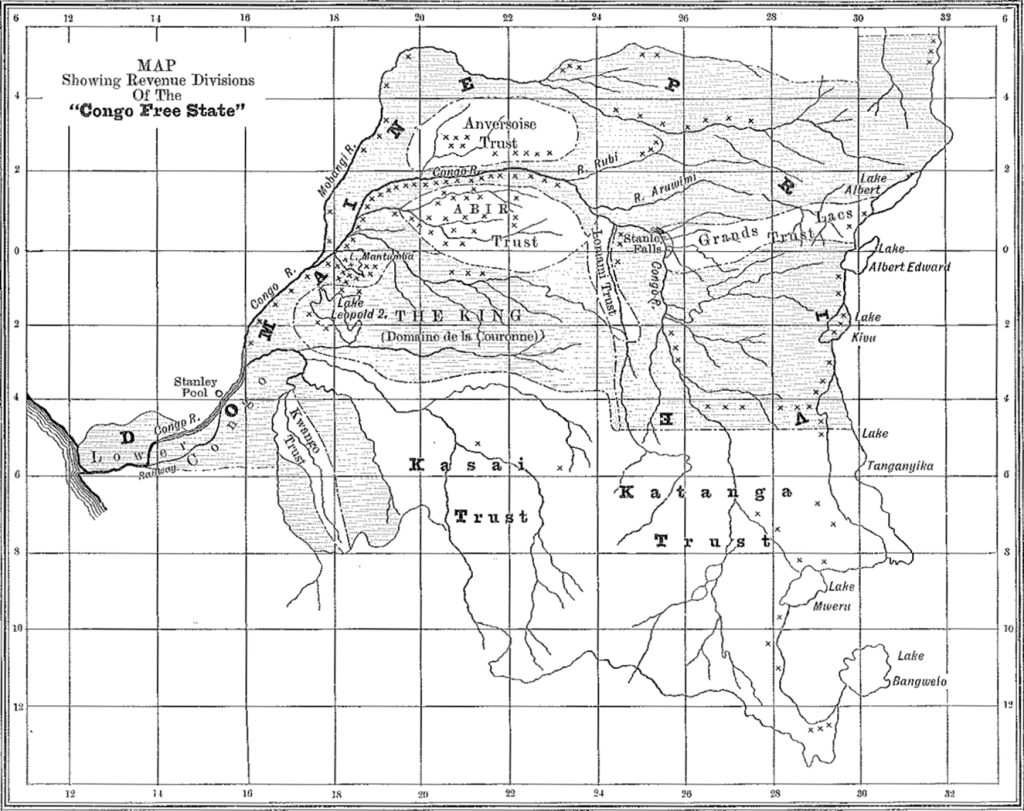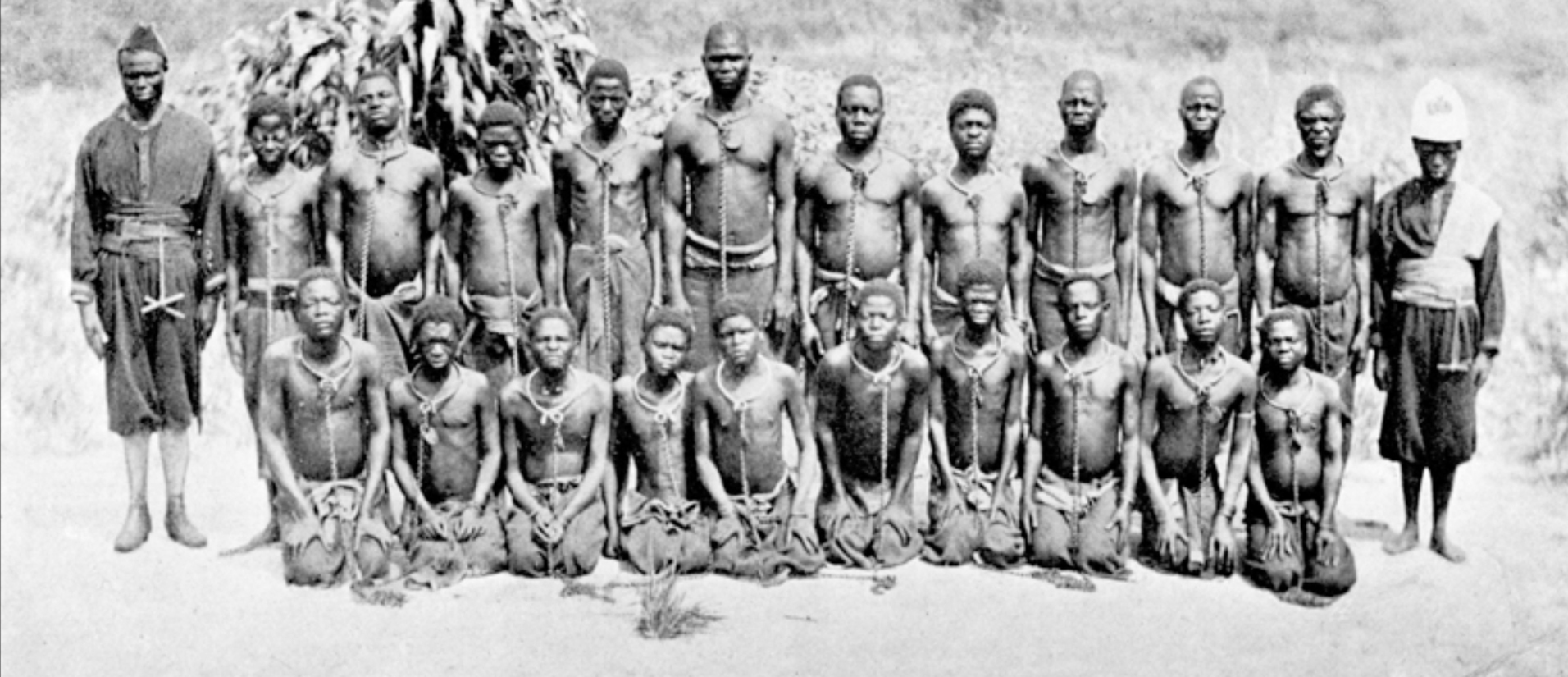[vc_row][vc_column][vc_column_text]The Congo Free State, also known as the Independent State of the Congo, was a private possession owned by King Leopold II of Belgium from 1885 to 1908. King Leopold II became interested in the region during Sir Henry Morton Stanley’s exploration of the Congo River between 1874 and 1877. Leopold’s claim to the vast region, approximately one third the size of the continental United States, was established in the 1880s as the private holding of a group of European investors headed by the king.
In November 1877, Leopold formed the Committee for Studies of the Upper Congo to open the African interior to European trade along the Congo River. Between 1879 and 1882, Stanley, working for Leopold and the European investors, established stations on the upper Congo, where he opened negotiations with local rulers. By 1884, the Association of Internationale du Congo had signed treaties with 450 independent African entities. Based on these treaties it then asserted its right to govern all the territories comprising the Congo Free State.
During the Berlin Conference of 1884-1885 where European nations partitioned the African continent, the region was officially named named the Congo Free State and the Conference recognized Leopold as its sole owner. Leopold, the only European to be granted private ownership of an African territory, in turn promised to bring civilization to the people in the area as his main goal.
By the early 1890s, under Leopold’s rule, the Congo Free State would become notorious for its cruel treatment of the Congolese. This included forced labor to harvest rubber, palm oil, and ivory. Punishment methods, including beatings and lashings, were used to force harvest-gathering quotas to be met. Another form of punishment that was used by the Force Publique (African soldiers led by European officers in the employ of Leopold) was the amputation of the hands of Congolese men, women, and even children if their rubber quotas were not met.

Map of the Congo Free State with crosses marking documented atrocities From Red Rubber by E.D. Morel, Courtesy Wikimedia Commons under public domain
In 1890, historian and journalist George Washington Williams, who traveled to the Congo Free State, first brought this exploitation to light when he wrote an open letter to Leopold about the suffering of the native inhabitants and the brutal treatment by Leopold’s agents. Polish British novelist Joseph Conrad, who visited the Congo Free State between 1890 and 1894, also brought attention to the mass atrocities on the Congolese people that he personally witnessed. He wrote what he saw in Heart of Darkness, which was first published in serialized form in Blackwoods Magazine in 1899 and then became a best-selling novel in 1902.
An international outcry followed led by British journalist Edmund Dene Morel, who campaigned against Leopold, focusing on the violence occurring in the Congo Free State. Morel’s campaign methods included using newspaper accounts, pamphlets, books, eyewitness testimony, and pictures of victims that came from missionaries to convey the story of horror in the Congo Free State. As a result of Morel’s campaign, the Congo Reform Association (CRA) was established in 1904 to promote reform of the Congo Free State.
In 1908, under the pressure of the CRA and other international groups, the Belgian Government took control of the Congo Free State from Leopold and renamed it the Belgian Congo.
Leopold died in 1909.
Belgium rule the region as a colonial possession until the Congo gained its independence in 1960. Today, it is the Democratic Republic of the Congo.[/vc_column_text][/vc_column][/vc_row]


